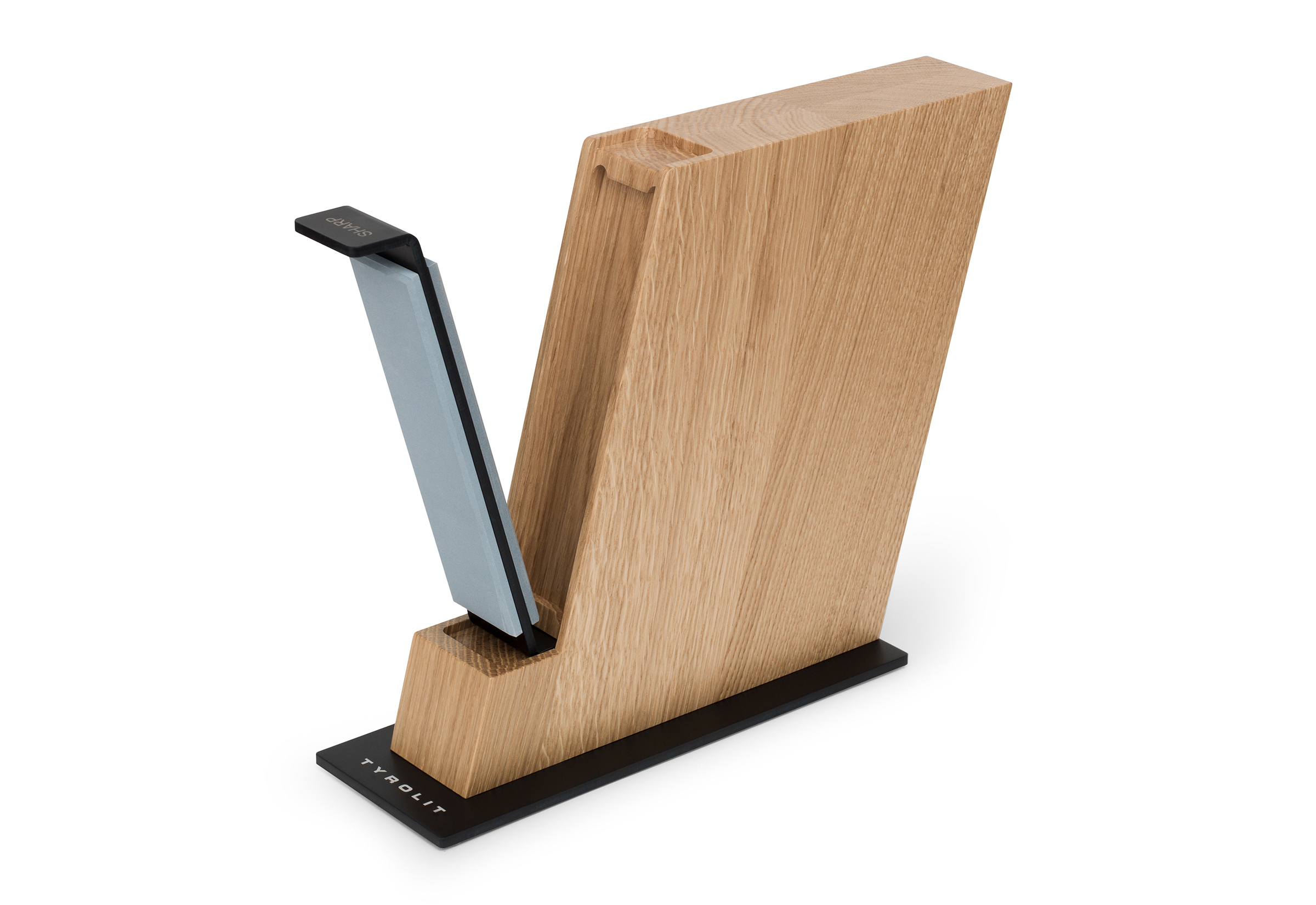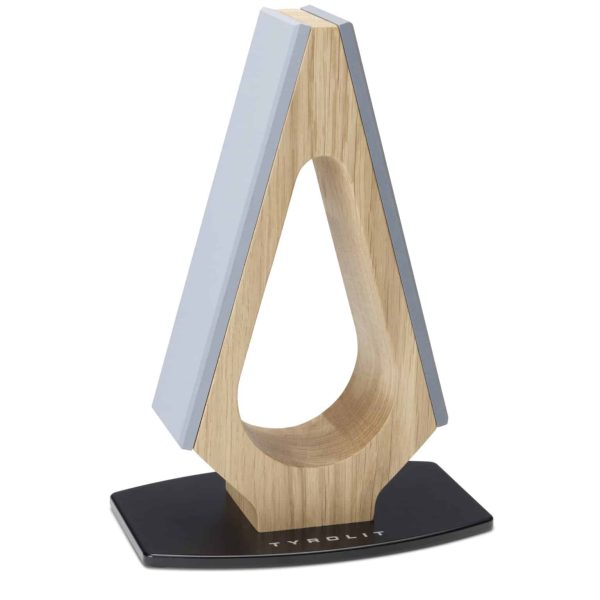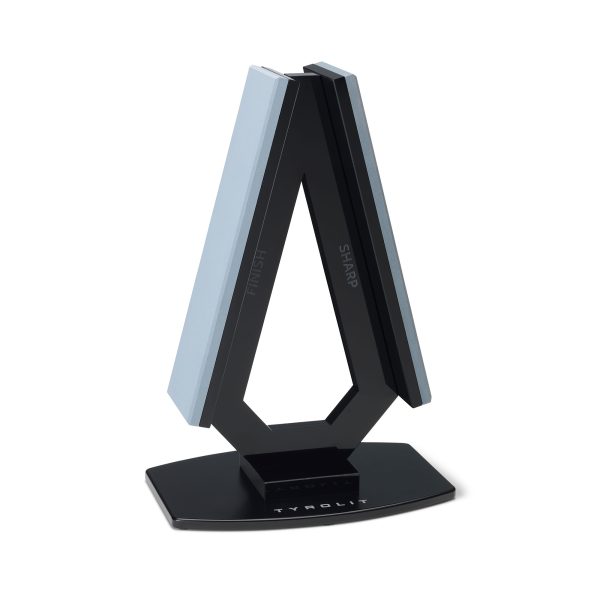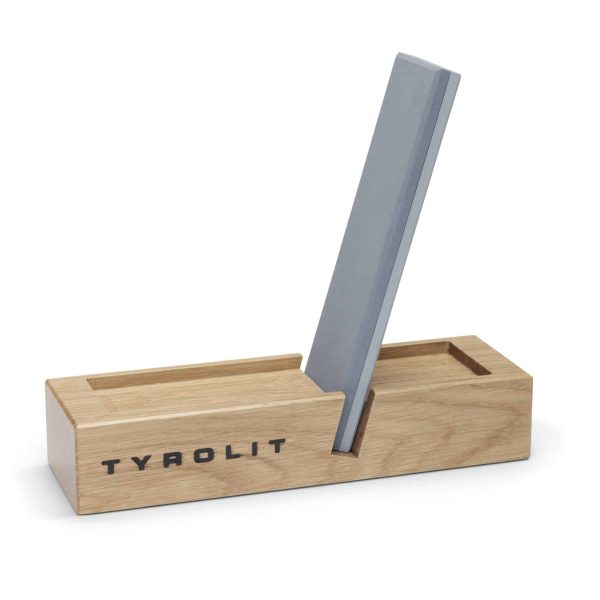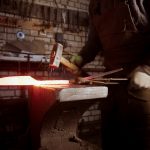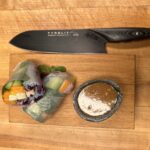Which whetstone grit is ideal for knife sharpening?
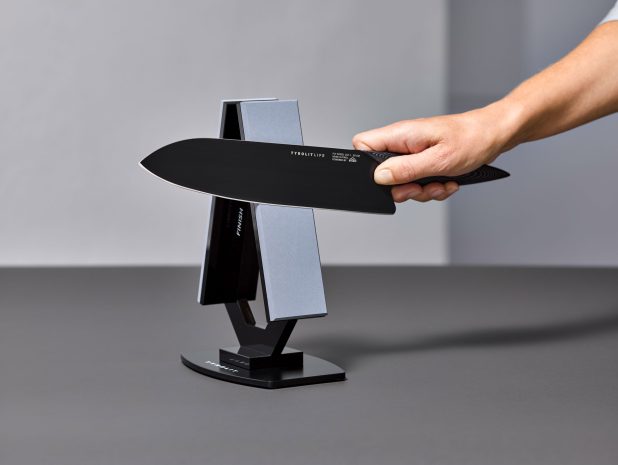
The question of the ideal grit for a whetstone comes up at the latest when food no longer gets cut as cleanly as usual in the kitchen. After all, for both hobby and professional chefs, few things are more frustrating than crushed tomatoes, frayed celery, or squished onions.
That is why in this article we deal with the different grain sizes of a whetstone and explain when which grain size should be used. A little tip in advance – there is no one correct grain size. This is also reflected in our repertoire of grinding stones with two different grain sizes:
As experts in abrasive materials, we offer knife sharpeners for various needs. Our aim was to create sharpening devices that merge the simple usage of a knife sharpener with the precision and efficiency of high-quality ceramic whetstones. This way, you get the best of both worlds.
Why grit matters when sharpening the knife
Before attempting to sharpen kitchen knives, the appropriate grit of the abrasive must be identified. This is true for all kinds of sharpening stones or whetstones, whether natural or ceramic.
The grain size of a grinding stone, whetstone or sharpening stone indicates how coarse or fine the grinding particles are and thus influences the material removal and the sharpness of the knife. Depending on whether a coarse or a fine grain is used, either more or less material is removed from the blade.
It is important to find the right measure here: you do not want to grind away unnecessarily much of the blade without it becoming noticeably sharper, nor do you want to spend hours grinding out notches and other damage.
In addition, European and Japanese knives are sometimes sharpened differently: international standards such as those of the FEPA or the JIS help to choose the right grain size.
The grit of the knife sharpening stone
The FEPA classification (Federation of European Producers of Abrasives) is an essential tool for selecting the appropriate sharpening stone for knives. It includes distinct guidelines for paper abrasives (FEPA P) and bonded abrasives (FEPA F) – our sharpening recommendations are based on the latter.
| Grain Range (FEPA) | Scope of application | Sample Grain |
|---|---|---|
| Coarse grain (up to 300) | Repairs and rough sharpening of heavily worn blades, often with a professional sharpening stone or sharpening machine | 300 |
| Medium Grain (300-500) | Still relatively coarse grit for the basic grind | 400 |
| Fine Grain (500-1000) | Fine sharpening and polishing of the knife blade | 800 |
| Very fine grain (from 1000) | Final polishing on the polishing stone for an extremely sharp edge | 2000 |
Tests for the sharpness of a knife
Before and after sharpening, it’s important to assess how dull the knife really is. This assessment will help determine the appropriate grit size or sharpening medium to use, whether it be a honing steel for quick touch-ups or a Tyrolit combination stone with both medium and fine grits (400 and 800) to fully restore the knife’s sharpness from the ground up.
- Visual inspection: Examination of the blade for chips, nicks, or burrs. These can suggest damage to the cutting edge.
- Paper test: A sharp knife should be able to cut through paper effortlessly. Difficulties in these tests indicate a blunt knife.
- Tomato test: A ripe piece of tomato should be cut with minimal pressure and without crushing. If the knife shows resistance, it may not be sharp enough.
Testing the sharpness of the blade with your knuckles or by shaving the arm hair carries the risk of injury – so you should refrain from such methods.
How to use a whetstone for knife sharpening?
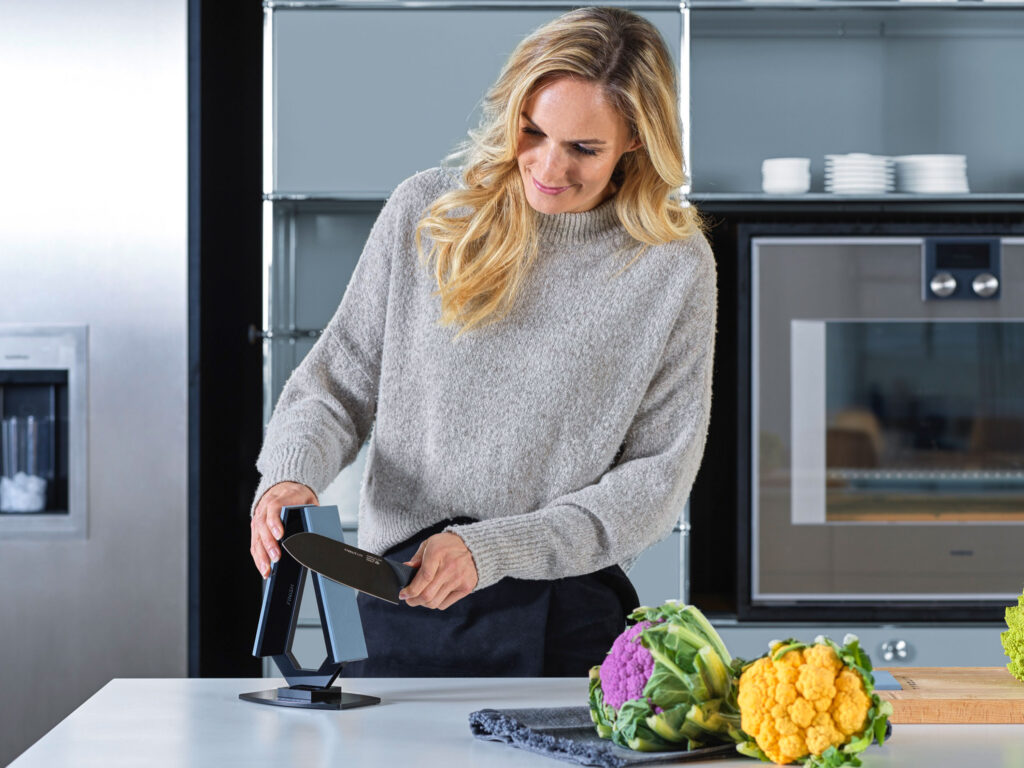
In order to apply a conventional whetstone correctly, patience and some practices are required to gradually achieve better and better grinding and sharpening results.
Start by thoroughly cleaning the blade to remove any residue. Depending on the model of the whetstone, prior soaking or moistening with water may be necessary.
Then lay the knife flat on the stone and select the appropriate sharpening angle. This is around 15 degrees for most European knives, while Japanese knives are sharpened at a more acute angle, often between 10 and 15 degrees. An exception is the European version of the santoku knife – this originally Japanese knife is also usually sharpened at an angle of about 15 degrees.
To make it easier to find and maintain the right sharpening angle, Tyrolit has developed an innovative knife sharpener that combines the advantages of classic sharpening stones with those of practical sharpening aids. Thanks to the preset sharpening angle of 15 degrees, it is enough to keep the knife perpendicular to the edge of the table when sharpening – it is automatically sharpened at the appropriate angle.
Slide the knife uniformly across the sharpening stone, adjusting the chosen grit in accordance with your sharpening progress. Ensure that you evenly sharpen both sides of the blade all the way along its length.
Finally, clean the knife thoroughly to remove any metal residue and dry it thoroughly.
First coarse whetstone grit, then fine grit
When sharpening a knife – whether using a whetstone or a knife sharpener – begin with a coarse to medium grit (e.g., grit 400) for the initial grind. This effectively removes material and evens out irregularities.
After the coarse pre-grinding, switch to a finer grit (e.g., grit 800) to achieve a fine grind. Using a finer grindstone enables a more precise finish and polishing of the knife blade.
In order to make sharpening the knives particularly uncomplicated, many sharpening stones are offered as combination stones – including the sharpening stones from Tyrolit, with grits of 400 and 800.
Sharpening knives with a whetstone – The correct angle
The correct sharpening angle when using whetstones significantly affects the sharpness and stability of your knife blade. For European knives, an angle of approximately 15 degrees is often recommended. This angle achieves a balanced equilibrium between the blade's sharpness and its durability.
Be sure to guide the knife evenly and stably to ensure a constant sharpening angle. Too steep or too shallow an angle can lead to uneven sharpness.
Because finding and maintaining the correct sharpening angle can often be challenging for beginners, Tyrolit Life has developed knife sharpeners with a preset angle of 15 degrees. These sharpening aids simplify the process of sharpening dull blades in daily use and ensure a consistently effective knife edge with two different grits of sharpening stones. Discover more about the distinctions between sharpening stones and knife sharpeners and why Tyrolit Life's products stand out.
Store and use knives carefully
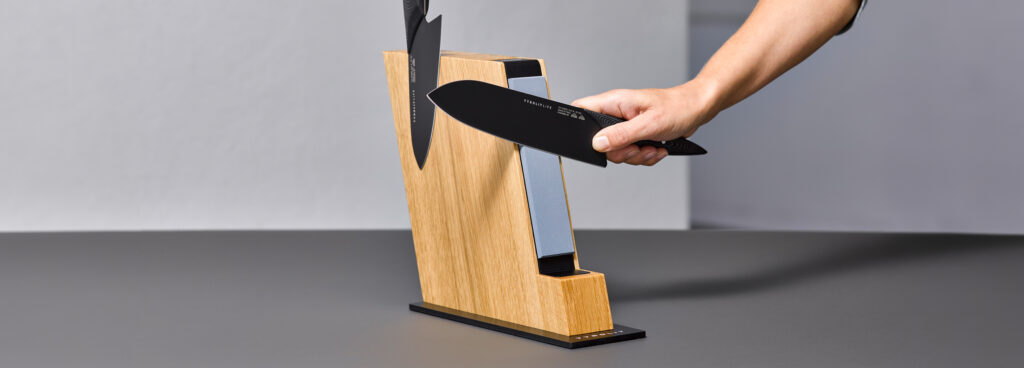
To ensure the long-term sharpness of your kitchen knives, it's important to treat them carefully after sharpening. Store your knives in a dry place to prevent rust. Options include magnetic strips, drawers with specialized knife inserts, or a high-quality knife block that can also serve as a focal point in your kitchen. Be careful to avoid the knife blades clashing against each other to prevent damage. A practical and elegant option is the magnetic knife block with sharpener from Tyrolit Life.
When using the knives, it is important to choose the right base. Cutting boards made of wood or plastic give way slightly when cutting and thus protect the blade, so that you do not have to sharpen too often.
To ensure you are fully equipped for cutting tasks even after sharpening, Tyrolit offers, alongside a wide range of high-quality knives and knife sharpeners, magnetic knife blocks and wooden cutting boards that come with a special added feature.
Sharpen knives with Tyrolit Life
Tyrolit Life presents a range of high-quality solutions for effective knife sharpening, perfect for amateur chefs and professionals.
These include not only combination stones with grits 400 and 800, but also innovative knife sharpeners with a preset sharpening angle of 15 degrees – ideal for most European knife types. These knife sharpeners combine comfort and ease of use with maximum control over the sharpening process, making these abrasives suitable for both beginners and kitchen professionals.
In addition, the Tyrolean abrasive expert Tyrolit also integrates its grinding stones into everyday kitchen tools: both the cutting board and the wooden knife block offer an integrated grinding stone, so that you have sharp knives at hand at all times without much effort.
FAQs
What does 1000 grit mean?
What grits do you need?
Which is sharper – 15 or 20 degrees?
Which whetstone is suitable for knife sharpening?


